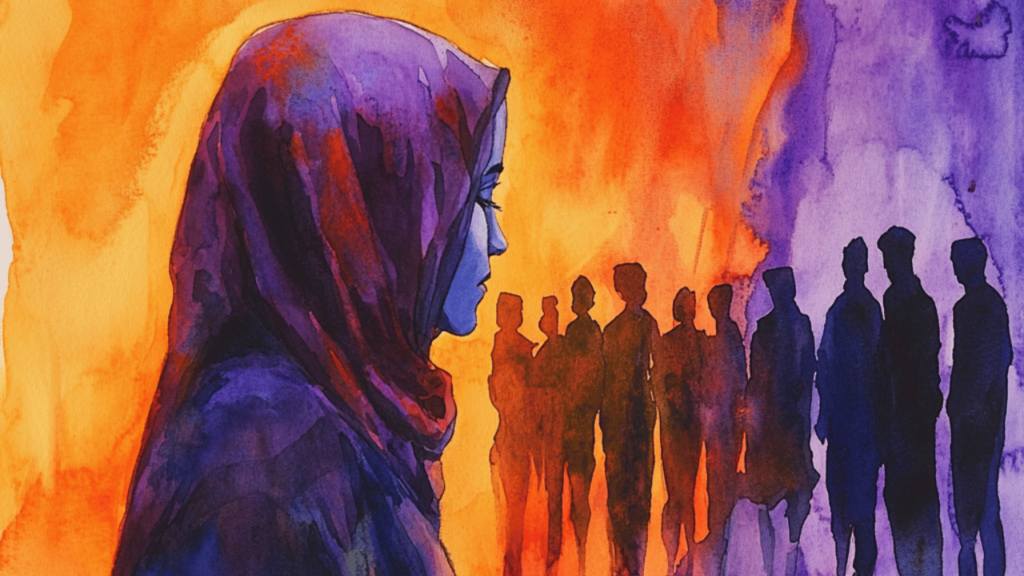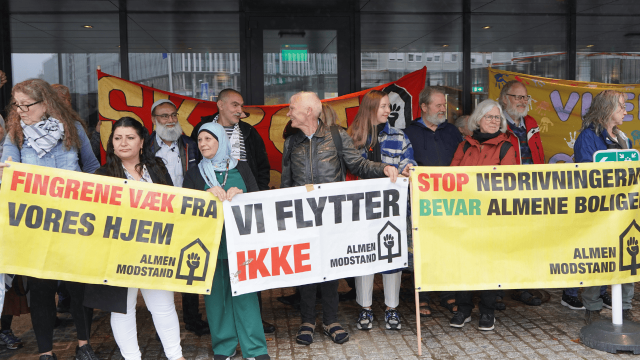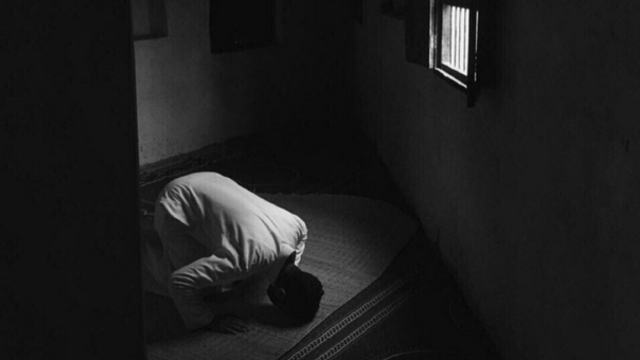What is discrimination?
The general normative framework for discrimination is set by Article 1 of Law No. 2008-496 of May 27, 2008, on various provisions for adaptation to Community law in the field of anti-discrimination (amended by Law No. 2017-256 of February 28, 2017). The definition is detailed in the Penal Code, in Articles 225-1 and following, and the Labor Code contains several provisions that prohibit direct or indirect discrimination based on a number of prohibited grounds ( Art. L. 1132-1 and following in particular ).
Discrimination can be direct or indirect.
Direct discrimination constitutes “the situation in which (…) a person is treated less favorably than another is, has been or would have been in a comparable situation” (Art. 1 Law No. 2008-496 of May 27, 2008).
Discrimination is an unequal and unfavorable treatment applied to certain people based on a criterion prohibited by law (e.g.: ethnic origin, language, name, sex, etc.) in an area determined by law. To characterize discrimination, there must therefore be an inequality of treatment and the combination of two cumulative conditions:
- The inequality of treatment is based on at least one criterion defined by law;
- In an area determined by law.
1. What are the general situations concerned by discrimination?
Discrimination occurs in various situations.
The law specifies the situations in which it is prohibited to discriminate according to the previously defined criteria. These situations concern:
- Employment, during recruitment or dismissal, etc.;
- Remuneration, social benefits;
- Access to private goods and services (housing, credit, leisure);
- Access to public goods and services (school, healthcare, civil status, social services);
- Education and training (registration conditions, admission, evaluation, etc.).
Examples of direct discriminatory situations:
- The internal regulations of a company reserve only for men the ability to remain in the company after 50 years old. This is gender and age discrimination (Cass. Soc. Dec. 7, 1993, No. 88-41422).
- The dismissal of a female IT engineer working with clients for refusing to remove her headscarf, following an express request from a client, characterizes religious discrimination (Cass. Soc. November 22, 2017, No. 13-19.855).
- The UN Human Rights Committee (decision of March 14, 2022-CCPR/C/134/D/2921/2016) considered that prohibiting a woman from wearing a headscarf during continuing adult education organized in a high school constitutes intersectional discrimination based on gender and religion.
- The dismissal of a Camaïeu saleswoman for wearing a headscarf is discriminatory: the company’s image or clients’ wishes are not acceptable grounds for prohibition (Cass. Soc., April 14, 2021, No. 19-24.079).
2. What are the criteria defined by law prohibiting discrimination?
Discrimination is constituted by any distinction made between natural persons or between legal persons on the basis of criteria enumerated by law:
” on the basis of their origin, sex, family situation, pregnancy, physical appearance, the particular vulnerability resulting from their economic situation, apparent or known to the perpetrator, their surname, their place of residence, their state of health, their loss of autonomy, their disability, their genetic characteristics, their morals, their sexual orientation, their gender identity, their age, their political opinions, their trade union activities, their quality as a whistleblower, facilitator or person linked to a whistleblower (…), their ability to express themselves in a language other than French, their belonging or non-belonging, real or supposed, to an ethnicity, Nation, supposed race or religion » (art. 225-1 Criminal Code).
There are thus more than 25 discriminatory criteria in French law.
To these criteria, articles 225-1-1 and 225-1-2 add discriminatory acts following sexual harassment and discriminatory acts following hazing.
In addition, in the professional context, other criteria exist. For example, no employee can be sanctioned, dismissed, or subjected to discriminatory measures:
- Due to the normal exercise of the right to strike (Article L. 1132-2 Labor Code);
- Due to the exercise of jury duties or citizen assessor functions (Art. L. 1132-3-1 Labor Code).
Legal Discriminations
The Criminal Code in its article 225-3 also specifies the discriminations not falling under the Criminal Code, in other words, legal discriminations.
Examples: discriminations based on health status or disability, when they consist of a refusal to hire based on medically established incapacity or refusals to hire based on nationality, when they result from the application of statutory provisions relating to public service.
There are also “positive actions,” sometimes called “positive discriminations.” These involve favoring certain groups of people who are victims of systematic discrimination to restore equal opportunities. This can apply to women in the context of employment (Art. L1142-4 Labor Code) or to workers with disabilities (Art. L1133-4 Labor Code), for example.
Penalties in Case of Discrimination
As it is a criminal offense, any individual guilty of discrimination risks up to 3 years imprisonment and a 45,000 euro fine.
The penalty can go up to 5 years in prison and a 75,000 euro fine for discrimination committed in public places or by a person holding public authority or charged with a public service mission (art. 225-2 and 432-7 of the Criminal Code).
Unlike the criminal sanctions set by the Labor Code for discrimination following harassment (Art. L.1132-1 and L.1155-2 of the Labor Code), those of the Criminal Code do not apply to discrimination relating to remuneration, reclassification, promotion, transfer, or renewal of the employment contract. They also do not apply to indirect discrimination: Cass. crim., June 8, 2021, no. 20-80.056.
The perpetrator of discrimination can be ordered to repair the damage and to pay, for example, damages to the victim.
Example: for having refused entry to her restaurant to a woman wearing a headscarf, the Bayonne court sentenced a restaurant owner to a 600 euro fine, payment of 1,300 euros for moral damages suffered by the customer and her son, and a citizenship course “for learning the values of the Republic” (Bayonne Court, November 29, 2022).
For legal entities, the conviction may be accompanied by a ban on exercising, exclusion from public contracts, closure of the establishment, display of the conviction (art. 225-4 of the Criminal Code).
How to Take Action?
It is possible at the litigation level to refer to different jurisdictions depending on the discrimination suffered:
- A criminal court;
- A civil court: for example, the Labor Court if the discrimination is in the professional context;
- An administrative court if the discrimination takes place in the public service or in a public service.
It is also possible to refer to other bodies:
- The labor inspectorate;
- Occupational health services;
- Employee representative institutions;
- An independent administrative authority: Defender of Rights;
- Associations;
- Trade unions.
The Burden of Proof
Given the difficulties for the victim to provide evidence of discrimination, in the case of a dispute related to employment or training, the law mitigates the burden of proof principle before civil and administrative courts (Art. L.1154-1 of the Labor Code and Art. 4 of Law No. 2008-496 of May 27, 2008). This principle facilitates the establishment of proof for victims who only need to gather elements establishing a presumption of discrimination. It is then up to the accused person to demonstrate, in a second step, that their actions are objective and non-discriminatory.
However, before criminal courts, the principle of presumption of innocence applies. The burden of proof then lies with the prosecutor. It is not up to the accused person to prove their innocence, but to the accuser to demonstrate their guilt. In criminal matters, evidence is free. It is possible to present an audio or video recording, even if recorded without a person’s knowledge, but dissemination outside of criminal proceedings is prohibited.
What to do in case of discrimination?
- Keep as much evidence as possible. Evidence can be diverse: testimony, presentation of documents, or even testing or situation testing.
- If the situation requires urgent intervention by law enforcement, you can alert the police or gendarmerie by dialing 17.
- Non-contentious approaches are possible: you can refer the matter to the Defender of Rights, who is empowered to intervene in cases of discrimination.
- If the discrimination occurs in the context of employment, you can contact trade unions that can advise you and support you in your proceedings.
- Inform your employer of the discrimination in writing.
- In the context of employment, you can report discriminatory behavior or act to the labor inspectorate.
- You can also alert the employee representatives.
- Depending on the situation, you can refer the matter to the competent court. For example, the Labor Court is competent in professional matters. In this case, the discriminatory act can be annulled, you can obtain damages and in case of dismissal, be reinstated in your job. You can refer the matter to the administrative court for the public sector.
- In case of urgency, you can file for an emergency injunction.
- You can file a complaint with the public prosecutor, the police station, or the gendarmerie.
- A class action is possible in matters of discrimination (Decree No. 2017-888 of May 6, 2017) when several people, placed in a similar situation, have suffered direct or indirect discrimination, based on the same grounds, from the same person (private or public). The action can be brought by associations legally declared for five years under certain conditions or, for discrimination committed at work, by representative trade unions.
- You can contact Equitas for legal support and assistance.
APPLICABLE REFERENCES
Law No. 2001-1066 of November 16, 2001 on the fight against discrimination; Law No. 2002-73 of January 17, 2002 on social modernization; Law No. 2008-496 of May 27, 2008 on various provisions for adaptation to Community law in the field of anti-discrimination; Directive No. 2000/78/EC of November 27, 2000, establishing a general framework for equal treatment in employment and occupation; Law No. 89-462 of July 6, 1989 on rental relationships (Art. 1); Law No. 2016-1547 on the modernization of 21st century justice of November 18, 2016; Decree No. 2017-888 of May 6, 2017
Articles 225-1 to 225-4 of the Penal Code (cases of discrimination and criminal sanctions); Article 432-7 of the Penal Code (criminal sanctions for a public official); Art. L1132-1 (discrimination at work); Articles L1133-1 and L1133-6 of the Labor Code (authorized unequal treatment in the private sector); Article 122-45 and 122-46 of the Labor Code; Decision of the Defender of Rights Dec. 9, 2020 No. 2020-214; Decision of the Defender of Rights Nov. 15, 2021, No. 2021-290;




